Cats are fascinating animals and are loved by many people around the world. They are funny, stylish and extremely photogenic. So it’s no surprise that cat photography has become one of the most popular trends in pet photography today.
If you are a cat lover and also enjoy photography, then this article is for you. Here, we’ll share valuable photography tips so you can capture beautiful moments of your cat or other felines you encounter.
Main points of this article:
- Why photographing cats is important
- Ideal equipment for photographing cats
- Camera Settings for Photographing Cats
- Light and lighting in cat photography
- Positioning and angles for photographing cats
- Capturing cat expressions and emotions
- Composition and framing in cat photography
- Tips for photographing cats in motion
- Cat photo editing
- Inspiration for photographing cats
Why photographing cats is important
Photographs of cats are a type of art that has gained more and more space in people’s lives. After all, who doesn’t love seeing those cute and funny images of kittens on the internet? But, in addition to being a form of entertainment, cat photography can also play an important role in the lives of feline owners.
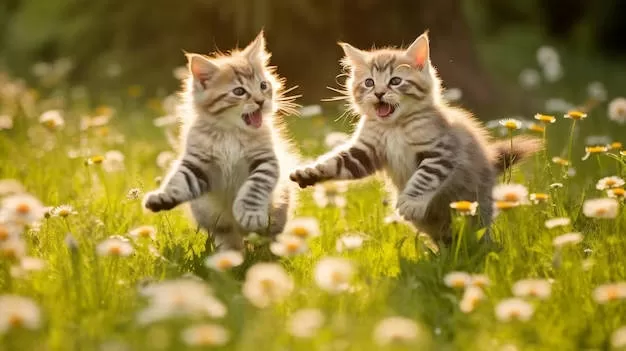
Cat photographs can help owners remember special moments with their pets. Additionally, they can be used to document kittens’ growth and to share with friends and family. It’s also a way to showcase each cat’s personality and unique characteristics .
Additionally, cat photography can be a way to help abandoned cats find homes. Well-made photographs can help draw people’s attention to these animals and increase the chances of adoption.
Ultimately, cat photography is an art form that can be enjoyed by many people around the world. It’s a way to capture the beauty and grace of these incredible animals, and to share it with other cat lovers.
Ideal equipment for photographing cats
Photographing cats can be challenging, but with the right equipment, you can capture incredible images of your favorite feline. Here is a list of the equipment you should consider having before you start photographing cats:
| Equipment | Description |
|---|---|
| DSLR Camera | A DSLR camera is a great option for photographing cats, as it offers full control over camera settings and superior image quality. |
| Fixed focal length lens | A fixed focal length lens with a wide aperture is ideal for photographing cats, as it allows you to blur the background and focus completely on the feline . |
| High speed memory card | A high-speed memory card is important for capturing images quickly and avoiding camera lag. |
| Outdoor lighting | Outdoor lighting can help illuminate your cat and add a natural glow to your photograph. |
| Reflector | A reflector is useful for reflecting natural light and brightening dark areas. |
| External flash | An external flash can be used to illuminate your cat and give your photograph a professional touch. |
| Tripod | A tripod can help stabilize your camera and avoid blurry images. |
Remember, you don’t need to have all of this equipment to photograph cats, but it can help you get better results. Start with what you have and experiment with different settings until you find what works best for you.
Camera Settings for Photographing Cats
Photographing cats can be challenging, but with the proper settings on your camera, you can capture incredible images. Here are some settings that might help:
Use a wide opening
A wide aperture (low F number) can help blur the background and make the cat stand out in the image. This can also create a sense of depth and make the cat’s expression more prominent.
Use a low ISO
A low ISO can help create sharper images with less noise. However, if you are shooting in low light conditions, you may need to increase the ISO to get the correct exposure.
Shutter speed
Shutter speed is important when photographing pets, especially cats who can be fast. Use a fast speed to freeze motion and avoid blurry photos. A shutter speed of at least 1/250 second can be adequate for most cat photography situations.
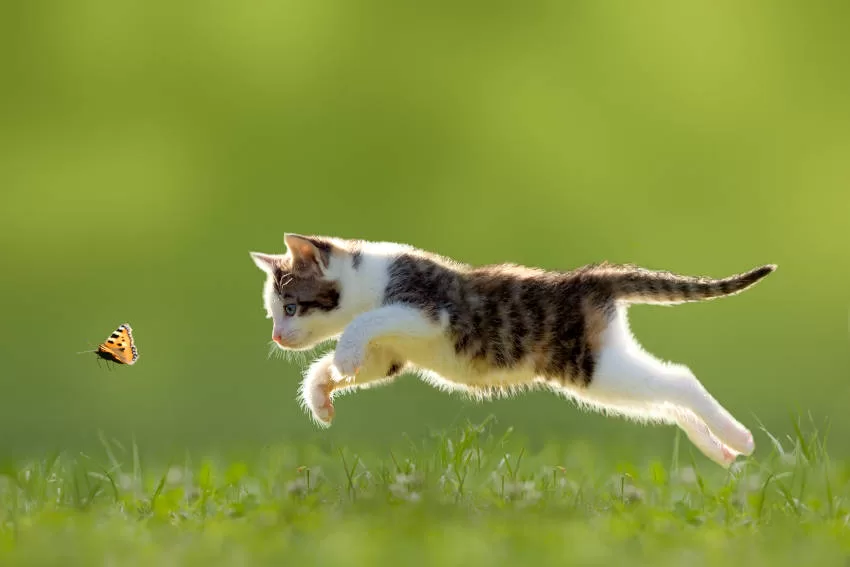
Focus Mode
Autofocus mode can work well when the cat is still and quiet. But if you’re photographing a moving cat, consider using continuous focus mode. This will allow the camera to adjust focus as the cat moves, which can lead to sharper images.
With these settings, you can start capturing amazing images of cats. Remember to experiment and adjust the settings according to the shooting situation for best results.
Light and Lighting in Cat Photography
When it comes to cat photography, light is one of the most important aspects to consider. Photographing cats in low-light environments can result in low-quality images with a lot of noise.
One of the best ways to ensure you have adequate light is to choose to shoot outdoors during the day when natural light is available. If you’re photographing indoors, try positioning your cat near a window to take advantage of the natural light.
If natural light is not available or not sufficient, you can supplement the lighting with a flash or artificial lighting. Make sure you use a flash that is compatible with your camera and is not too powerful, otherwise it may make your photos look artificial.
Camera Settings for Low Light Cat Photography
If you’re shooting in low-light environments, it’s important to adjust your camera settings to ensure your images are of the proper quality. Here are some tips:
| Settings | Recommended value |
|---|---|
| ISO | 400-800 |
| Diaphragm opening | f/2.8-f/4 |
| Shutter speed | 1/60s-1/125s |
Note that these values are only recommended and may vary depending on the camera and lighting conditions.
Additionally, you can use Aperture Priority (Av) mode or Shutter Priority (Tv) mode to quickly adjust camera settings according to lighting conditions.
With a little practice and experimentation, you can find the ideal settings for your camera in different lighting conditions.
Positioning and angles for photographing cats
When photographing cats, the positioning and angle you choose can make all the difference in the final result of your photo. In addition to enhancing the beauty of the animal, the correct position and angle help tell a story and convey emotions through the image.
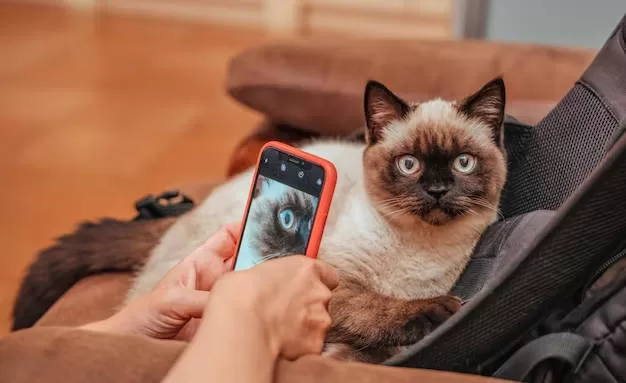
One of the best ways to get a good photo of a cat is to photograph it in its natural environment. If your cat has a favorite place to sleep, for example, try photographing him there. If he loves playing with a particular toy, take some photos while he’s having fun. This way, you will be able to capture the feline’s personality and behavior in a natural and spontaneous way.
Another important tip is to position yourself at the same height as the cat. If he is on the floor, sit on the floor or bend down to be at the same level as him. If he is on a piece of furniture, climb onto a chair or ladder to reach a similar height. This helps create a closer visual connection with the animal and capture more authentic expressions and emotions.
Also, try to vary your photography angles. Front-on photos are great for showing details of your cat’s face and capturing expressions. Profile photos are great for showing the animal’s elegance. And photos from behind can help tell a story or show the cat’s relationship with its surroundings. Don’t be afraid to experiment and test different angles to get the best photo possible.
Positioning and angle tips:
- Photograph the cat in its natural environment
- Position yourself at the same height as the cat
- Vary your photography angles
Capturing cat expressions and emotions
One of the biggest challenges in photographing cats is being able to capture their expressions and emotions. After all, these animals are very expressive and can show different emotions such as curiosity, fear, joy and even anger. To record these moments, you need to pay close attention to the cat’s behavior and be prepared to click at the right moment.
An important tip is to observe the environment in which the cat is located and try to capture its interaction with the space. Cats love exploring new environments and can express a lot of curiosity and distrust at the same time. If you can capture these emotions in a photograph, you will have an incredible record.
Capturing facial expressions
Another important aspect when photographing cats is paying attention to facial expressions. They can raise their eyebrows, widen their eyes, raise their ears and show their fangs. These behaviors are very common and can indicate different emotions, such as curiosity, fear, aggression and joy. To capture these moments, you must always be aware of the cat’s behavior and click at the right moment.
An important tip is to use the camera’s continuous mode to record several moments in a row. This way, you increase the chances of capturing the exact expression you want.
Using toys and snacks
A widely used technique to capture expressions and emotions in cats is to use toys and snacks. These items can attract the cat’s attention and stimulate several interesting behaviors that can be recorded in photographs.
To use this technique, you need to be aware of the cat’s behavior and know how to choose the right time to use toys and snacks. It is important to remember that the objective is to record the cat’s emotions and expressions, and not just focus on the toy or treat itself.
Conclusion
Capturing cat expressions and emotions is a challenge, but it can also be a very rewarding task. Observing the cat’s behavior , paying attention to facial expressions and using toys and snacks are some of the techniques that can help you record incredible moments in photography.
Composition and framing in cat photography
In addition to lighting and location, composition and framing are key to taking attractive photos of your cat. Composition is the way elements are organized in the image, while framing is what goes inside the image frame. Together, they create an image that is visually pleasing and tells a story.
To get a good composition, you can follow the rule of thirds. Imagine the image divided into nine equal parts (like a game of tic-tac-toe) and position the cat at one of the intersections of these lines. This will help create a balanced and interesting image.
Another tip is to pay attention to symmetry and balance. If the cat is looking to the left, it is best to place it on the right part of the image. This helps create balance in the image and draw the viewer’s attention to your cat ‘s face.
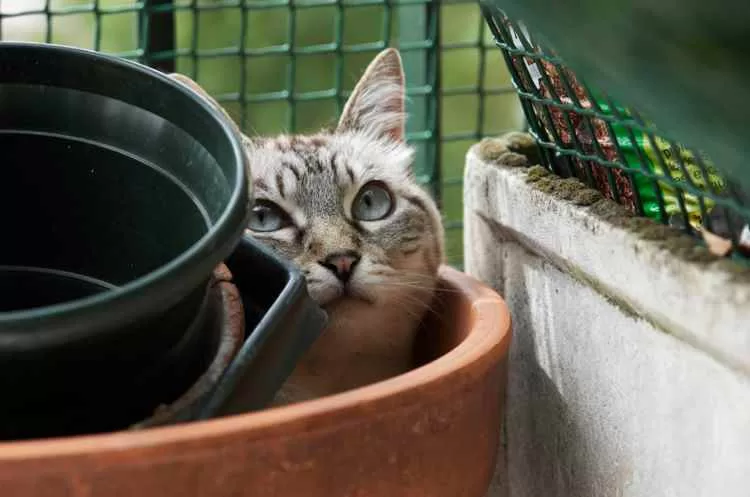
Additionally, experiment with different angles and perspectives to add visual interest. Try photographing the cat from above, below, from the side or in close-up. This will give you a variety of options to choose from.
For framing, remember to leave enough space around the cat so that it doesn’t fit too tightly into the image. It’s also important to think about the background and make sure it doesn’t distract the cat’s attention. A simple background, like a white wall, can be a great option to highlight the cat.
Remember, composition and framing are important techniques for telling a visual story through your cat photography . Try different techniques and find what works best for you and your cat!
Tips for photographing cats in motion
Photographing cats in motion is a challenge, but it can yield amazing and fun photos. Check out some tips for capturing the best images of your feline in motion:
- Use continuous shooting mode: To capture the poses and quick movements of cats, it is important to have the option to shoot multiple photos in a row. Use your camera’s continuous shooting mode to ensure you don’t miss a moment.
- Choose a high shutter speed: A high shutter speed helps freeze the cat’s movement, preventing blurry photos. Try choosing a speed around 1/1000 second.
- Focus on the cat’s eyes: The cat’s eyes are the most expressive part of its face and can convey a lot of personality . Make sure your eyes are sharp and in focus in the photo.
- Position yourself at the cat’s height: For a more engaging and interesting perspective on the photo, try positioning yourself at the cat’s height. Crouch or lie on the floor so you can capture the cat’s movement in more detail.
- Use a simple background: To avoid distractions in the photo, choose a simple, neutral background. A white background or a plain wall, for example, can highlight the cat in the photo.
- Take advantage of natural light: Natural light can be an ally when photographing cats in motion. Photograph in a well-lit environment and avoid using flash, which can scare the cat and change the colors of the photo.
- Create an interesting composition: The arrangement of elements in the photo can make it more dynamic and interesting. Try framing the cat in one third of the image, for example, to create a more attractive composition.
- Try to capture the cat’s personality: Each cat has its own unique personality, and by photographing it in motion, you can capture some of its most interesting features. Wait for the right moment and record your feline’s peculiar behavior.
Tips for photographing cats in motion
Photographing cats in motion can be a challenge, but with a few simple tips, you can capture beautiful images of your felines in action.
Use the correct shutter speed
One of the main things to consider when photographing cats in motion is the camera’s shutter speed. To freeze the cat’s movement, you need a fast shutter. A good rule of thumb is to use a shutter speed of at least 1/500th of a second. If light conditions are poor, you may need to increase the camera’s ISO sensitivity to compensate.
Use continuous autofocus
To track the cat’s movement, it is important to use the camera’s continuous autofocus. This will allow the camera to continue automatically adjusting focus as the cat moves through the scene.
Anticipate the cat’s movements
To capture the perfect moment, it’s important to anticipate the cat’s movements. Try to anticipate where the cat will move and be prepared to take the photo at the right moment.
Use a continuous shooting mode
Using the camera’s continuous shooting mode can help you capture the exact moment when the cat is at its best angle.
Take photos from different angles
Try photographing the cat from different angles to get interesting results. Try placing yourself in different positions, such as below the cat or above it, to gain new perspectives.
With these tips, you’ll be better equipped to capture beautiful photos of your cats on the move. With a little practice, you’ll be able to capture incredible moments and unique expressions from your felines.
Inspiration for photographing cats
Have you ever found yourself looking at your cat and feeling the urge to capture that special expression or pose in a photo? Or even felt like going out on the streets looking for cats to photograph?
Don’t worry, this is completely normal! Cats are fascinating and expressive animals, and can often be great models for photography.
If you’re looking for inspiration for your cat photos, here are some ideas:
Photograph your cat’s daily life
One of the best ways to capture authentic moments is to photograph your cat in its everyday life. Try capturing moments like when he’s stretching after a nap, playing with his favorite toys, or snuggling in a cozy crate. It’s these moments that make your cat’s personality unique.
Explore different scenarios
Photographing your cat in different settings can give you a wide variety of photos. Try photographing him in different rooms in the house or outdoors in a nearby park. You can also try photographing him in different positions, such as standing, sitting or lying down.
Capture your cat’s personality
Each cat has its own distinct personality. Try to capture your cat’s personality in your photos. If he’s a playful cat, try capturing him jumping into the air. If he’s a relaxed cat, photograph him lying down in a comfortable spot. The possibilities are endless!
Photograph stray cats
If you are passionate about cats, you have probably seen many stray cats in your city. They can be a great subject for your photos! Try photographing them as they move around the city and interact with people. But remember to be respectful and not disturb cats in their natural habitat.
Cat photography can be a fun and rewarding activity. With these ideas in mind, you can start capturing your own cats ‘ special moments or exploring the city in search of new feline role models.
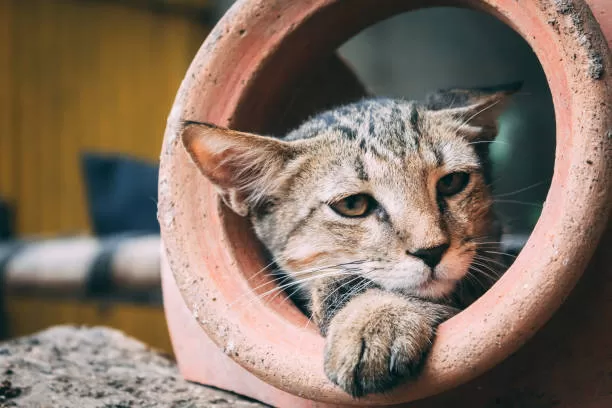
FAQ
Q: Why is photographing cats important?
A: Photographing cats is important because it allows us to capture special moments and unique expressions of these adorable animals. Furthermore, the photos can help promote the adoption of abandoned cats and raise awareness about the importance of caring for animals.
Q: What is the ideal equipment for photographing cats?
A: To photograph cats, it is recommended to use a camera with a good image quality, whether a DSLR camera or a smartphone camera with a good resolution. A lens with a good aperture and a suitable focal length is also important for creating sharp photos with background blur.
Q: What are the ideal camera settings for photographing cats?
A: Camera settings may vary depending on lighting conditions and the desired effect in the photo. However, it is recommended to use a wide aperture for background blur, a fast shutter speed to capture the cat action, and a low ISO to avoid image noise.
Q: How to use light and lighting in cat photography?
A: Natural light is ideal for photographing cats as it creates a soft atmosphere and highlights the details of the fur. Avoid lights that are too harsh or directly in the cat’s face, as this can cause unwanted shadows. If necessary, use a reflector to fill in dark areas.
Q: What is the best positioning and angles for photographing cats?
A: The ideal positioning when photographing cats is to be at eye level to create a visual connection. Try different angles, like top-down or bottom-up, to get interesting perspectives. Remember to leave enough space around the cat to frame the image.
Q: How to capture cats’ expressions and emotions?
A: To capture cats’ expressions and emotions, it is important to be aware of their behaviors and have patience. Keep an eye on your cat’s ears, eyes, and mouth, as these body parts can reveal its emotions. It’s also helpful to use toys or treats to attract your cat’s attention.
Q: What are your tips for composition and framing in cat photography?
A: When composing and framing a cat photo, consider the rule of thirds, positioning the cat in the image’s strong points. Pay attention to background elements to avoid distractions and try to create a sense of balance in the composition. Also try shooting in different planes of focus to create depth.
Q: What are your tips for photographing cats in motion?
A: When photographing cats in motion, it is recommended to use a fast shutter speed to freeze the action. It can also be useful to use the camera’s continuous shooting mode to capture several moments in a row. Keep in mind that you may need to practice a lot and anticipate your cat’s movements to get the best results.
Q: How to perform cat photo editing?
A: In cat photo editing, you can adjust exposure, contrast and saturation to enhance colors and lighting. Additionally, you can apply filters or adjust sharpness to give your photos a special touch. Always remember to preserve the cat’s natural appearance and avoid exaggeration when editing.
Q: Where to find inspiration for photographing cats?
A: You can find inspiration for photographing cats in different places, such as social networks specialized in pets, cat photography books, art exhibitions or even observing cats themselves in their routines. Explore different photography styles and techniques to find your own inspiration.
External Links:

